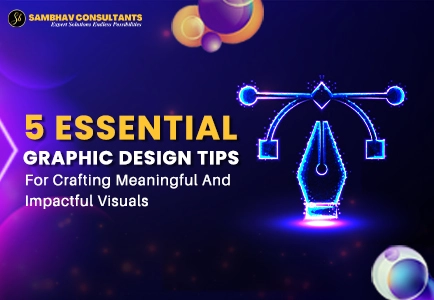

Therefore, This research aims to establish the role of graphic design in creating meaningful content in the digital world. While learning the basics of logo design certain fundamentals can help a professional designer or even a designer-interested individual to create visually appealing designs. As Graham Smith so rightly said, graph design is one of the most fascinating categories of design, centered around well-balanced aesthetics and pragmatic efficiency, which gives no room for complacency in practice. However, here, I will be presenting five crucial tips that can help in perfect your graphic design skills and create beautiful and effective designs.
Understand the Power of Color Theory - Many people find color theory to be invaluable when it comes to the design process of a particular project as it can help designers in several ways, such as helping them set a certain mood, gain attention, and even guide the eyes of the viewers. A complementary combination can create contrast where necessary to bring out particular items while an analogous combination can afford a smooth flow of one color into the next. Further, there is knowledge about colors that make up emotional and cultural connections which heightened the value of design – blue can mean calmness and trust while red can be tied to excitement or urgency. The relationship between the colors and the feelings it creates helps the designers in creating visually appealing and influencing human emotions.
Typography Matters - Typography is one of the aesthetic properties of designs that dictate the tones of work and their readability in place. Even here, where type sizes and line lengths are correct, a bad font selection will detract from the looks of the message you want to convey or distract the reader. When designing, it’s best to stick with two or three fonts and it is best to follow the font hierarchy where the headings and body fonts will be arranged in an orderly manner to guide the audience’s attention. The fonts should also follow your design’s tone and if you are going for formal then you should use the serif font or if you want to have clean looking design then the sans-serif is appropriate. Appropriate selection of fonts of use and pacing facilitates clear communication and adds harmony to the layout.
Embrace Minimalism for Better Focus - Applying a minimalistic style in design is useful since it helps avoid distractions and focuses the viewer’s attention on the most relevant aspects. The well-balanced application of white space allows your content to stand out and gives it a chance to state its points. This is because you reduce the number of elements on one page, and this approach of using straight lines and clear geometric shapes gives the page a more polished professional look which is both more neat and clearer. When done right, minimalism centers the viewer’s focus on the message, making sure it can be heard through the loudness of extra information.
Master Layout and Composition for Visual Flow - Understanding the concepts of layout and composition are the basic but important elements of designing where the message has to be well conveyed through the visuals involved in the work. In addition, the layout should have a familiar structure that directs the viewer’s attention to the message smoothly and elegantly. Designing basics like balance, relative alignment, and rule of thirds helps to reduce chaos and add more structure to what you’re creating. Proper grids can then come in handy in such cases when you have a lot of items and you need to keep everything balanced Grids can be particularly helpful during the organization of items and their proportions As for important items, they should be placed in a way that they are noticed by people at first glance. Regardless of such layouts being symmetrical or purposely asymmetrical, the flow of the layout makes the design appear tack sharp and delivers the message without being too complicated, cluttered, or confusing to the viewer.
Leverage Modern Design Tools and Resources - Modern design tools offer graphic designers the ability to create professional and polished visuals with greater ease and efficiency. Choosing the right tool based on your skill level and project needs is essential for optimizing your workflow.
Canva remains popular for newcomers as it offers templates and such features as drag-and-drop for the first illustrations.
For more advanced and custom creations, Adobe Photoshop and Illustrator remain the industry standards, offering powerful, detailed features.
Figma is a standout for collaborative projects, particularly in UI/UX design, allowing teams to work together seamlessly.
By leveraging the right tools, designers can execute their ideas with precision and save valuable time.
No doubt understanding the fundamentals of graphic design can go a long way in improving your skill of drawing good graphics that can convey strong messages. Straightforward, colors, typography, simplification, layout, and composition, as well as today’s design resources, fill your toolbox, You’ll know how to create special designs. If you are creating images for your brand, for a marketing campaign, or social media covers and posts, the above tricks will guide you in creating memorable work. Graphic design is not only the aesthetic process but storytelling whereby one aims to create pictorial masterpieces that relay a specific and meaningful message. The idea is to infuse aesthetics with practicality to be able to come up with beautiful and effective designs.